What Is Lukitus Virus?
This article will help you remove the .lukitus File Virus completely. Follow the ransomware removal instructions given at the bottom.
.Lukitus File Virus is actually the latest iteration of the Locky ransomware family that places the .lukitus extension to all locked files. A massive e-mail campaign spreading over 980 e-mails is seen in action. Your computer device will become infected, and your files encrypted if you open any attached files from such a spam e-mail. No real changes exist regarding this version of the Locky virus. Continue reading and check if you can potentially restore your data.
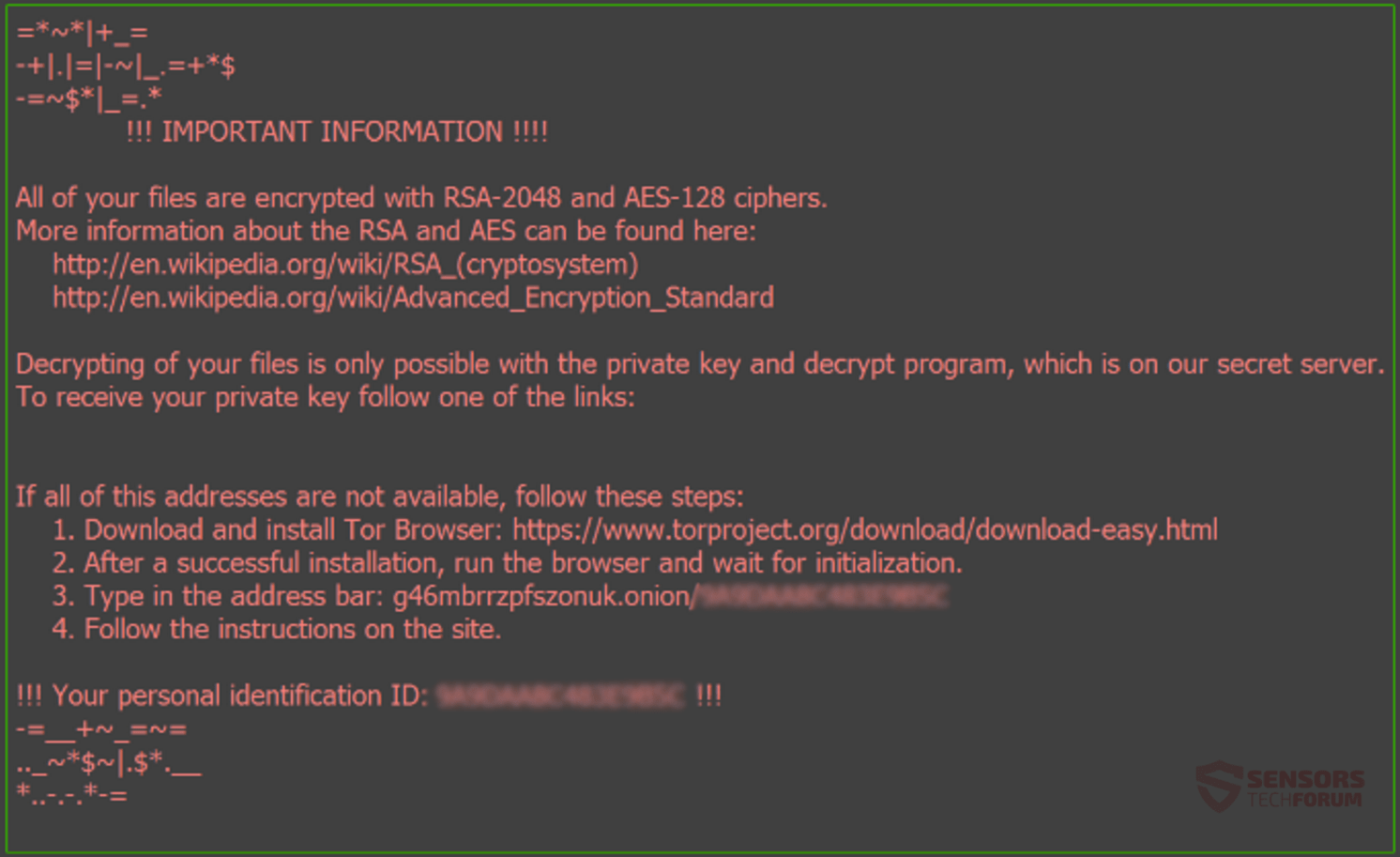
Lukitus File Virus Details
| Name | .Lukitus File Virus |
| Type | Ransomware, Cryptovirus |
| Short Description | The .Lukitus file virus is a new variant of Locky ransomware. The cryptovirus has some changes in its infection method, but not many other ones. |
| Symptoms | Your files are encrypted and will get the .lukitus extension attached to them. You see a ransom note with instructions which states that the encryption which is used is both AES and RSA. |
| Distribution Method | Spam Email Campaigns with File Attachments, Malicious Domains |
| Detection Tool |
See If Your System Has Been Affected by malware
Download
Malware Removal Tool
|
| Data Recovery Tool |
The newest malware spam campaign revolving around the .Lukitus variant of the Locky virus is massive. Over 23 million users are reported to have received these e-mails and the victims are many. The campaign mainly spoofs the famous Google service “DropBox“. The email contents look like an official e-mail from DropBox and that is considered phishing. However, it appears that this is not the only type of e-mail that users have received. Beware as there are many variants. Below you can see more details about the DropBox e-mails, which seem to be currently the most spread.
You will receive an email message that uses the DropBox logo, a sender email address that looks like its sent from that service and it looks like in the following screenshot:
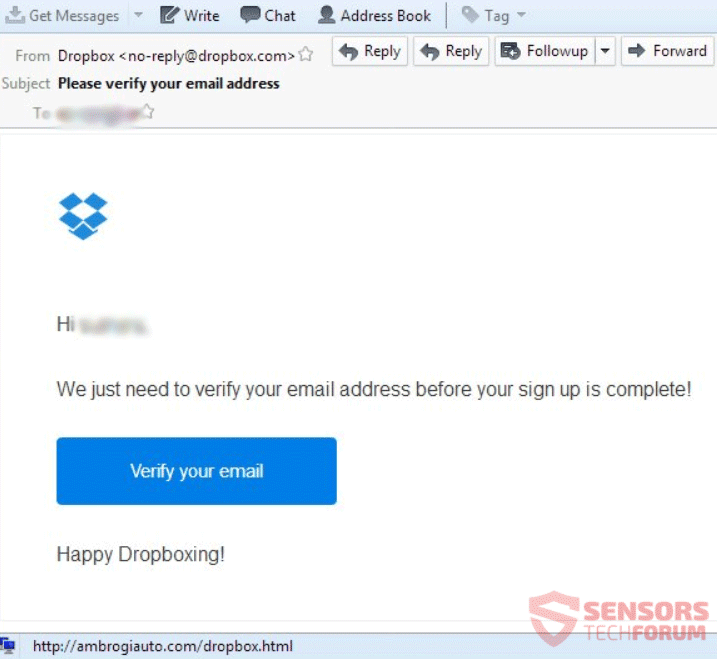
The email states the following:
Hi [your name here],
We just need to verify your email address before your sign up is complete!
Verify your email
Happy Dropboxing!
If you fall for it and click on the designated link, you will find yourself on another online page that looks like this:
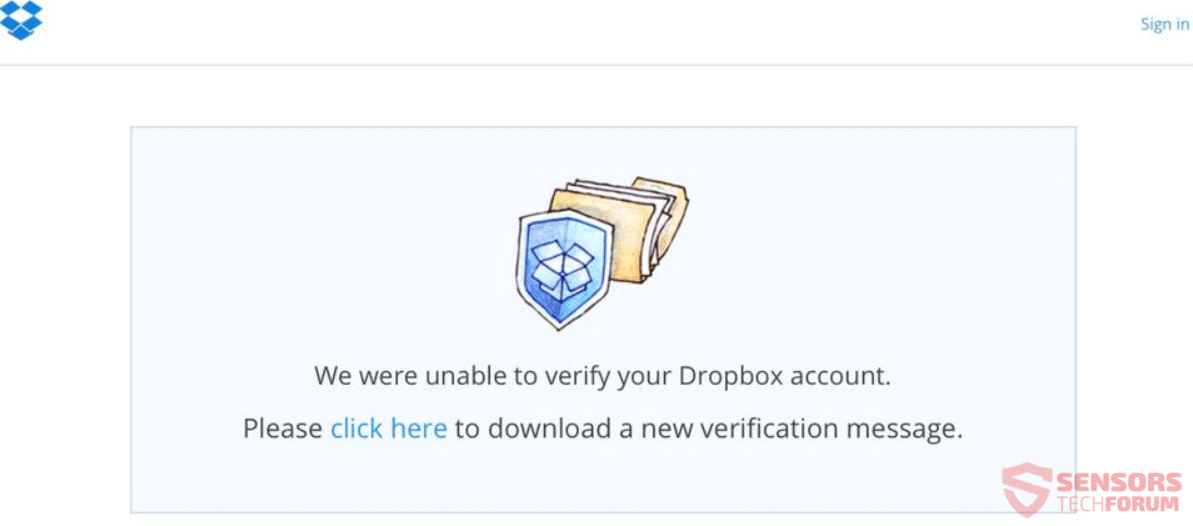
If you click on the second link as well, then you get the .Lukitus variant of the Locky ransomware “dropped” on your PC and it will encrypt your files. Be wary of what you click on, and never trust emails that are from unknown entities or are received surprisingly at times you weren’t expect them. In the next section you will see what other ways exist for the virus to spread and more technical details about the ransomware as a whole.
.Lukitus File Virus – Distribution Methods
.Lukitus File Virus as a new version of Locky ransomware, is distributing itself via a massive e-mail spam campaign, which according to researchers has now reached over 1000 emails. At the time of writing of this article, there are not many reports of victims. However, the e-mail has one of the following two subjects:
- PAYMENT
- Emailing [random letters and numbers]
Such an e-mail will contain a .zip, .rar or .7z attachment – example: July-August2017.rar. When the attachment is opened, it will look like a normal document. That file has a JS trigger (and could contain a .jse file) and the said script will download the malware. You can see a sample with one such file on the VirusTotal service right here:
In the email, the attachment inside the .zip file will probably have one of the following extensions:
.doc, .docx, .xls, .xlsx, .jpg, .tiff, .pdf, .jpg
So, that will make the file look like a document or a picture. Command&Control (C2) Server will be pinged, and that server will download Locky’s malicious executable in an encrypted form so it can try to bypass security software. The Necurs Botnet and the BlankSlate malware spam campaign have been reported to spread the e-mails with malicious attachment for Locky’s .lukitus variant.
Below you can see the domains spreading this variant of the ransomware:
Notice. The above list with domains is for purely informational purposes and it is strongly advised against the opening of any of them, because they will download the virus onto your computer.
Here is the body text of most current e-mail spam campaigns:
Your message is ready to be sent with the following file or link
attachments:
Payment_201708-838
Note: To protect against computer viruses, e-mail programs may prevent
sending or receiving certain types of file attachments. Check your e-mail
security settings to determine how attachments are handled.
Before opening any file from the Internet, always perform a scan with a security program.
.Lukitus File Virus – Technical Information
The .lukitus File Virus is actually the newest variant of Locky ransomware. Dubbed after the extension .lukitus that it places to encrypted files, this version of the infamous cryptovirus has been discovered to spread not only with the help of its old malicious domains, but with some new ones.
The Locky ransomware also makes entries in the Windows Registry to achieve a higher level of persistence. Registry entries of that caliber are typically designed to start the virus automatically with every launch of the Windows Operating System or even repress and tamper with processes.
The message with the ransom payment instructions appears to be unchanged and is stored in two files yet again – one in a .jpg, the other in a .html. You can preview the picture that is placed as your Desktop background below:

The ransom message reads the following:
=*~*I+_=
-+H=I-~I_-=+*$
-=~$*I_=.*
!!! IMPORTANT INFORMATION !!!!
All of your files are encrypted with RSA-2048 and AES-128 ciphers.
More information about the RSA and AES can be found here:
https://en.wildpedia.org/wiki/RSA_(cryptosystem)
https://en.wikipedia.org/wiki/Advanced_Encryption_StandardDecrypting of your files is only possible with the private key and decrypt program, which is on our secret server.
To receive your private key follow one of the links:
If all of this addresses are not available, follow these steps:
1. Download and install Tor Browser: https://www.torproject.org/downIoad/download-easy.html
2. After a successful installation, run the browser and wait for initialization.3. Type in the address bar: g46mbrrzpfszonuk.onion
4. Follow the instructions on the site.
!!! Your personal identification ID: !!!
-=_+~_=~=
~*$~l.$*._
You can preview the .html version of that note in the picture down here:
How the TOR payment page looks like:
Here is what it says on that payment page:
Locky Decryptor™
We present a special software – Locky Decryptor™ –
which allows to decrypt and return control to all your encrypted files.How to buy Locky Decryptor™?
You can make a payment with BitCoins, there are many methods to get them.
You should register BitCoin wallet:
Simplest online wallet or Some other methods of creating wallet
Purchasing Bitcoins, although it’s not yet easy to buy bitcoins, it’s getting simpler every day.Here are our recommendations:
localbitcoins.com (WU) Buy Bitcoins with Western Union.
coincafe.com Recommended for fast, simple service.
Payment Methods: Western Union, Bank of America, Cash by FedEx, Moneygram, Money Order. In NYC: Bitcoin ATM, in person.
localbitcoins.com Service allows you to search for people in your community willing to sell bitcoins to you directly.
cex.io Buy Bitcoins with VISA/MASTERCARD or wire transfer.
btcdirect.eu The best for Europe.
bitquick.co Buy Bitcoins instantly for cash.
howtobuybitcoins.info An international directory of bitcoin exchanges.
cashintocoins.com Bitcoin for cash.
coinjar.com CoinJar allows direct bitcoin purchases on their site.
anxpro.com
bittylicious.com
Send 0.5 BTC to Bitcoin address:Note: Payment pending up to 30 mins or more for transaction confirmation, please be patient…
Date Amount BTC Transaction ID Confirmations
not found
Refresh the page and download decryptor.
When Bitcoin transactions will receive one confirmation, you will be redirected to the page for downloading the decryptor.
As clearly seen from the Tor payment page, the .Lukitus file virus wants you to pay 0.5 Bitcoin, which equals to nearly 2060 US dollars at the moment of writing this article. However, you should NOT under any circumstances pay anything to the cybercriminals. Nobody can guarantee that you can recover your data upon payment, or that you won’t get your computer infected once more in the future. Moreover, giving money to cybercriminals this way could be interpreted as supporting them financially, and could also motivate them to keep committing similar crimes, such as creating ransomware viruses. That is evidently true as new variants of Locky ransomware keep coming out.
.Lukitus File Virus – Encryption Process
The .lukitus File Virus is dubbed like that by victims, because it appends the .lukitus extension to all encrypted files. As malware researchers have confirmed that it is indeed a new variant of the Locky Ransomware, it is most likely seeking to encrypt files with extensions such as its previous iterations, and namely the following:
→.001, .002, .003, .004, .005, .006, .007, .008, .009, .010, .011, .123, .1cd, .3dm, .3ds, .3fr, .3g2, .3gp, .3pr, .602, .7z, .7zip, .ARC, .CSV, .DOC, .DOT, .MYD, .MYI, .NEF, .PAQ, .PPT, .RTF, .SQLITE3, .SQLITEDB, .XLS, .aac, .ab4, .accdb, .accde, .accdr, .accdt, .ach, .acr, .act, .adb, .adp, .ads, .aes, .agdl, .ai, .aiff, .ait, .al, .aoi, .apj, .apk, .arw, .asc, .asf, .asm, .asp, .aspx, .asset, .asx, .avi, .awg, .back, .backup, .backupdb, .bak, .bank, .bat, .bay, .bdb, .bgt, .bik, .bin, .bkp, .blend, .bmp, .bpw, .brd, .bsa, .cdf, .cdr, .cdr3, .cdr4, .cdr5, .cdr6, .cdrw, .cdx, .ce1, .ce2, .cer, .cfg, .cgm, .cib, .class, .cls, .cmd, .cmt, .config, .contact, .cpi, .cpp, .cr2, .craw, .crt, .crw, .cs, .csh, .csl, .csr, .css, .csv, .d3dbsp, .dac, .das, .dat, .db, .db3, .db_journal, .dbf, .dbx, .dc2, .dch, .dcr, .dcs, .ddd, .ddoc, .ddrw, .dds, .der, .des, .design, .dgc, .dif, .dip, .dit, .djv, .djvu, .dng, .doc, .docb, .docm, .docx, .dot, .dotm, .dotx, .drf, .drw, .dtd, .dwg, .dxb, .dxf, .dxg, .edb, .eml, .eps, .erbsql, .erf, .exf, .fdb, .ffd, .fff, .fh, .fhd, .fla, .flac, .flf, .flv, .flvv, .forge, .fpx, .frm, .fxg, .gif, .gpg, .gray, .grey, .groups, .gry, .gz, .hbk, .hdd, .hpp, .html, .hwp, .ibank, .ibd, .ibz, .idx, .iif, .iiq, .incpas, .indd, .iwi, .jar, .java, .jnt, .jpe, .jpeg, .jpg, .js, .kc2, .kdbx, .kdc, .key, .kpdx, .kwm, .laccdb, .lay, .lay6, .lbf, .ldf, .lit, .litemod, .litesql, .log, .ltx, .lua, .m2ts, .m3u, .m4a, .m4p, .m4u, .m4v, .mapimail, .max, .mbx, .md, .mdb, .mdc, .mdf, .mef, .mfw, .mid, .mkv, .mlb, .mml, .mmw, .mny, .moneywell, .mos, .mov, .mp3, .mp4, .mpeg, .mpg, .mrw, .ms11, .msg, .myd, .n64, .nd, .ndd, .ndf, .nef, .nk2, .nop, .nrw, .ns2, .ns3, .ns4, .nsd, .nsf, .nsg, .nsh, .nvram, .nwb, .nx2, .nxl, .nyf, .oab, .obj, .odb, .odc, .odf, .odg, .odm, .odp, .ods, .odt, .ogg, .oil, .onetoc2, .orf, .ost, .otg, .oth, .otp, .ots, .ott, .p12, .p7b, .p7c, .pab, .pages, .pas, .pat, .pcd, .pct, .pdb, .pdd, .pdf, .pef, .pem, .pfx, .php, .pif, .pl, .plc, .plus_muhd, .png, .pot, .potm, .potx, .ppam, .pps, .ppsm, .ppsx, .ppt, .pptm, .pptx, .prf, .ps, .psafe3, .psd, .pspimage, .pst, .ptx, .pwm, .py, .qba, .qbb, .qbm, .qbr, .qbw, .qbx, .qby, .qcow, .qcow2, .qed, .r3d, .raf, .rar, .rat, .raw, .rb, .rdb, .re4, .rm, .rtf, .rvt, .rw2, .rwl, .rwz, .s3db, .safe, .sas7bdat, .sav, .save, .say, .sch, .sd0, .sda, .sdf, .sh, .sldm, .sldx, .slk, .sql, .sqlite, .sqlite3, .sqlitedb, .sr2, .srf, .srt, .srw, .st4, .st5, .st6, .st7, .st8, .stc, .std, .sti, .stm, .stw, .stx, .svg, .swf, .sxc, .sxd, .sxg, .sxi, .sxm, .sxw, .tar, .tar.bz2, .tbk, .tex, .tga, .tgz, .thm, .tif, .tiff, .tlg, .txt, .uop, .uot, .upk, .vb, .vbox, .vbs, .vdi, .vhd, .vhdx, .vmdk, .vmsd, .vmx, .vmxf, .vob, .wab, .wad, .wallet, .wav, .wb2, .wk1, .wks, .wma, .wmv, .wpd, .wps, .x11, .x3f, .xis, .xla, .xlam, .xlc, .xlk, .xlm, .xlr, .xls, .xlsb, .xlsm, .xlsx, .xlt, .xltm, .xltx, .xlw, .xml, .ycbcra, .yuv, .zip
The encryption algorithm that is claimed to be used by Locky in all of its ransom notes is RSA-2048 with AES 128-bit ciphers. Encrypted files will be renamed with a logical sequence of numbers stemming from your ID number. For instance, such a file will look like G93562L1-K86Z-019J-47N5V911-87QP4TK6FHXM.lukitus.
The Locky cryptovirus has a highly probability to delete the Shadow Volume Copies from the Windows Operating System by executing the following command:
→vssadmin.exe delete shadows /all /Quiet
The command eliminates one of the prominent ways for file restoration on your computer system. That makes the encryption process of the virus even more viable.
Remove .Lukitus File Virus and Restore Your Files
If your computer got infected with the .Lukitus File Virus, you should have a bit of experience in removing malware. You should get rid of this ransomware as quickly as possible before it can have the chance to spread further and infect other computer systems. You should remove the ransomware and follow the step-by-step instructions guide provided below.
- Step 1
- Step 2
- Step 3
- Step 4
- Step 5
Step 1: Scan for .Lukitus File Virus with SpyHunter Anti-Malware Tool



Ransomware Automatic Removal - Video Guide
Step 2: Uninstall .Lukitus File Virus and related malware from Windows
Here is a method in few easy steps that should be able to uninstall most programs. No matter if you are using Windows 10, 8, 7, Vista or XP, those steps will get the job done. Dragging the program or its folder to the recycle bin can be a very bad decision. If you do that, bits and pieces of the program are left behind, and that can lead to unstable work of your PC, errors with the file type associations and other unpleasant activities. The proper way to get a program off your computer is to Uninstall it. To do that:


 Follow the instructions above and you will successfully delete most unwanted and malicious programs.
Follow the instructions above and you will successfully delete most unwanted and malicious programs.
Step 3: Clean any registries, created by .Lukitus File Virus on your computer.
The usually targeted registries of Windows machines are the following:
- HKEY_LOCAL_MACHINE\Software\Microsoft\Windows\CurrentVersion\Run
- HKEY_CURRENT_USER\Software\Microsoft\Windows\CurrentVersion\Run
- HKEY_LOCAL_MACHINE\Software\Microsoft\Windows\CurrentVersion\RunOnce
- HKEY_CURRENT_USER\Software\Microsoft\Windows\CurrentVersion\RunOnce
You can access them by opening the Windows registry editor and deleting any values, created by .Lukitus File Virus there. This can happen by following the steps underneath:


 Tip: To find a virus-created value, you can right-click on it and click "Modify" to see which file it is set to run. If this is the virus file location, remove the value.
Tip: To find a virus-created value, you can right-click on it and click "Modify" to see which file it is set to run. If this is the virus file location, remove the value.
Before starting "Step 4", please boot back into Normal mode, in case you are currently in Safe Mode.
This will enable you to install and use SpyHunter 5 successfully.
Step 4: Boot Your PC In Safe Mode to isolate and remove .Lukitus File Virus





Step 5: Try to Restore Files Encrypted by .Lukitus File Virus.
Method 1: Use STOP Decrypter by Emsisoft.
Not all variants of this ransomware can be decrypted for free, but we have added the decryptor used by researchers that is often updated with the variants which become eventually decrypted. You can try and decrypt your files using the instructions below, but if they do not work, then unfortunately your variant of the ransomware virus is not decryptable.
Follow the instructions below to use the Emsisoft decrypter and decrypt your files for free. You can download the Emsisoft decryption tool linked here and then follow the steps provided below:
1 Right-click on the decrypter and click on Run as Administrator as shown below:

2. Agree with the license terms:

3. Click on "Add Folder" and then add the folders where you want files decrypted as shown underneath:

4. Click on "Decrypt" and wait for your files to be decoded.

Note: Credit for the decryptor goes to Emsisoft researchers who have made the breakthrough with this virus.
Method 2: Use data recovery software
Ransomware infections and .Lukitus File Virus aim to encrypt your files using an encryption algorithm which may be very difficult to decrypt. This is why we have suggested a data recovery method that may help you go around direct decryption and try to restore your files. Bear in mind that this method may not be 100% effective but may also help you a little or a lot in different situations.
Simply click on the link and on the website menus on the top, choose Data Recovery - Data Recovery Wizard for Windows or Mac (depending on your OS), and then download and run the tool.
.Lukitus File Virus-FAQ
What is .Lukitus File Virus Ransomware?
.Lukitus File Virus is a ransomware infection - the malicious software that enters your computer silently and blocks either access to the computer itself or encrypt your files.
Many ransomware viruses use sophisticated encryption algorithms to make your files inaccessible. The goal of ransomware infections is to demand that you pay a ransom payment to get access to your files back.
What Does .Lukitus File Virus Ransomware Do?
Ransomware in general is a malicious software that is designed to block access to your computer or files until a ransom is paid.
Ransomware viruses can also damage your system, corrupt data and delete files, resulting in the permanent loss of important files.
How Does .Lukitus File Virus Infect?
Via several ways..Lukitus File Virus Ransomware infects computers by being sent via phishing emails, containing virus attachment. This attachment is usually masked as an important document, like an invoice, bank document or even a plane ticket and it looks very convincing to users.
Another way you may become a victim of .Lukitus File Virus is if you download a fake installer, crack or patch from a low reputation website or if you click on a virus link. Many users report getting a ransomware infection by downloading torrents.
How to Open ..Lukitus File Virus files?
You can't without a decryptor. At this point, the ..Lukitus File Virus files are encrypted. You can only open them once they are decrypted using a specific decryption key for the particular algorithm.
What to Do If a Decryptor Does Not Work?
Do not panic, and backup the files. If a decryptor did not decrypt your ..Lukitus File Virus files successfully, then do not despair, because this virus is still new.
Can I Restore "..Lukitus File Virus" Files?
Yes, sometimes files can be restored. We have suggested several file recovery methods that could work if you want to restore ..Lukitus File Virus files.
These methods are in no way 100% guaranteed that you will be able to get your files back. But if you have a backup, your chances of success are much greater.
How To Get Rid of .Lukitus File Virus Virus?
The safest way and the most efficient one for the removal of this ransomware infection is the use a professional anti-malware program.
It will scan for and locate .Lukitus File Virus ransomware and then remove it without causing any additional harm to your important ..Lukitus File Virus files.
Can I Report Ransomware to Authorities?
In case your computer got infected with a ransomware infection, you can report it to the local Police departments. It can help authorities worldwide track and determine the perpetrators behind the virus that has infected your computer.
Below, we have prepared a list with government websites, where you can file a report in case you are a victim of a cybercrime:
Cyber-security authorities, responsible for handling ransomware attack reports in different regions all over the world:
Germany - Offizielles Portal der deutschen Polizei
United States - IC3 Internet Crime Complaint Centre
United Kingdom - Action Fraud Police
France - Ministère de l'Intérieur
Italy - Polizia Di Stato
Spain - Policía Nacional
Netherlands - Politie
Poland - Policja
Portugal - Polícia Judiciária
Greece - Cyber Crime Unit (Hellenic Police)
India - Mumbai Police - CyberCrime Investigation Cell
Australia - Australian High Tech Crime Center
Reports may be responded to in different timeframes, depending on your local authorities.
Can You Stop Ransomware from Encrypting Your Files?
Yes, you can prevent ransomware. The best way to do this is to ensure your computer system is updated with the latest security patches, use a reputable anti-malware program and firewall, backup your important files frequently, and avoid clicking on malicious links or downloading unknown files.
Can .Lukitus File Virus Ransomware Steal Your Data?
Yes, in most cases ransomware will steal your information. It is a form of malware that steals data from a user's computer, encrypts it, and then demands a ransom in order to decrypt it.
In many cases, the malware authors or attackers will threaten to delete the data or publish it online unless the ransom is paid.
Can Ransomware Infect WiFi?
Yes, ransomware can infect WiFi networks, as malicious actors can use it to gain control of the network, steal confidential data, and lock out users. If a ransomware attack is successful, it could lead to a loss of service and/or data, and in some cases, financial losses.
Should I Pay Ransomware?
No, you should not pay ransomware extortionists. Paying them only encourages criminals and does not guarantee that the files or data will be restored. The better approach is to have a secure backup of important data and be vigilant about security in the first place.
What Happens If I Don't Pay Ransom?
If you don't pay the ransom, the hackers may still have access to your computer, data, or files and may continue to threaten to expose or delete them, or even use them to commit cybercrimes. In some cases, they may even continue to demand additional ransom payments.
Can a Ransomware Attack Be Detected?
Yes, ransomware can be detected. Anti-malware software and other advanced security tools can detect ransomware and alert the user when it is present on a machine.
It is important to stay up-to-date on the latest security measures and to keep security software updated to ensure ransomware can be detected and prevented.
Do Ransomware Criminals Get Caught?
Yes, ransomware criminals do get caught. Law enforcement agencies, such as the FBI, Interpol and others have been successful in tracking down and prosecuting ransomware criminals in the US and other countries. As ransomware threats continue to increase, so does the enforcement activity.
About the .Lukitus File Virus Research
The content we publish on SensorsTechForum.com, this .Lukitus File Virus how-to removal guide included, is the outcome of extensive research, hard work and our team’s devotion to help you remove the specific malware and restore your encrypted files.
How did we conduct the research on this ransomware?
Our research is based on an independent investigation. We are in contact with independent security researchers, and as such, we receive daily updates on the latest malware and ransomware definitions.
Furthermore, the research behind the .Lukitus File Virus ransomware threat is backed with VirusTotal and the NoMoreRansom project.
To better understand the ransomware threat, please refer to the following articles which provide knowledgeable details.
As a site that has been dedicated to providing free removal instructions for ransomware and malware since 2014, SensorsTechForum’s recommendation is to only pay attention to trustworthy sources.
How to recognize trustworthy sources:
- Always check "About Us" web page.
- Profile of the content creator.
- Make sure that real people are behind the site and not fake names and profiles.
- Verify Facebook, LinkedIn and Twitter personal profiles.



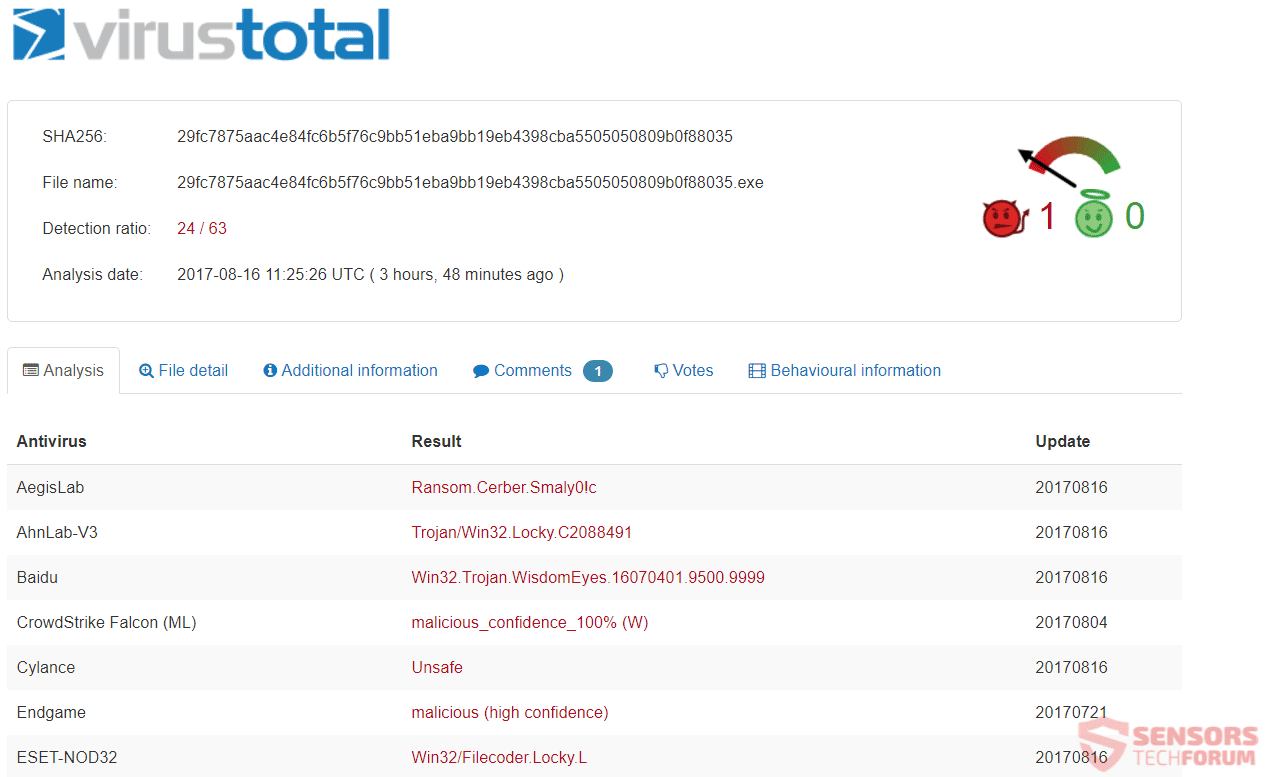
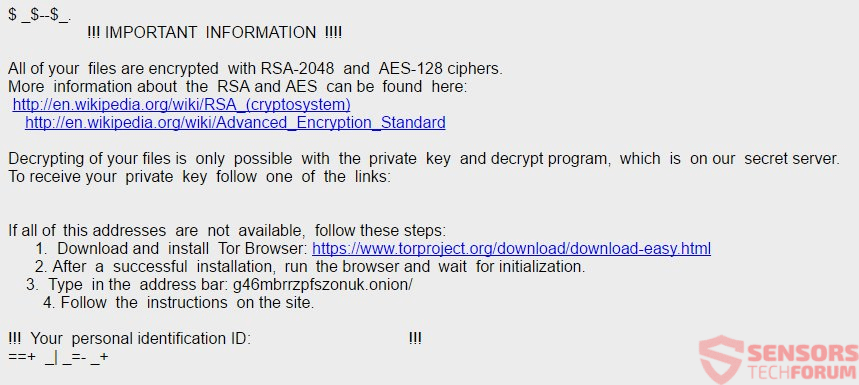
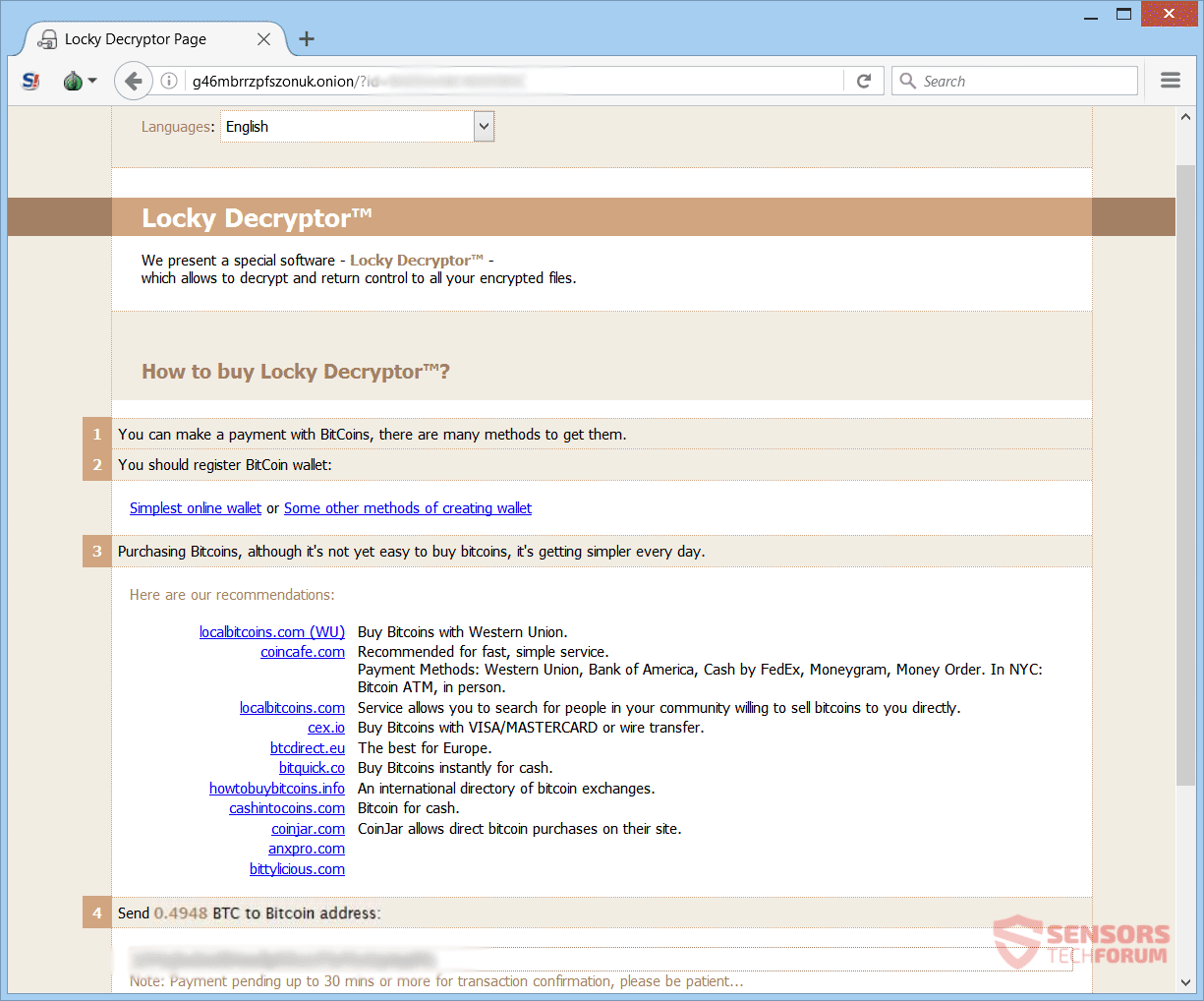
Dears.
please please I need you help to get my files back as before.
I am a very normal person I use this files for my self to stay in job other wise I am out with out them ,so please help me.
waiting for your feed back.